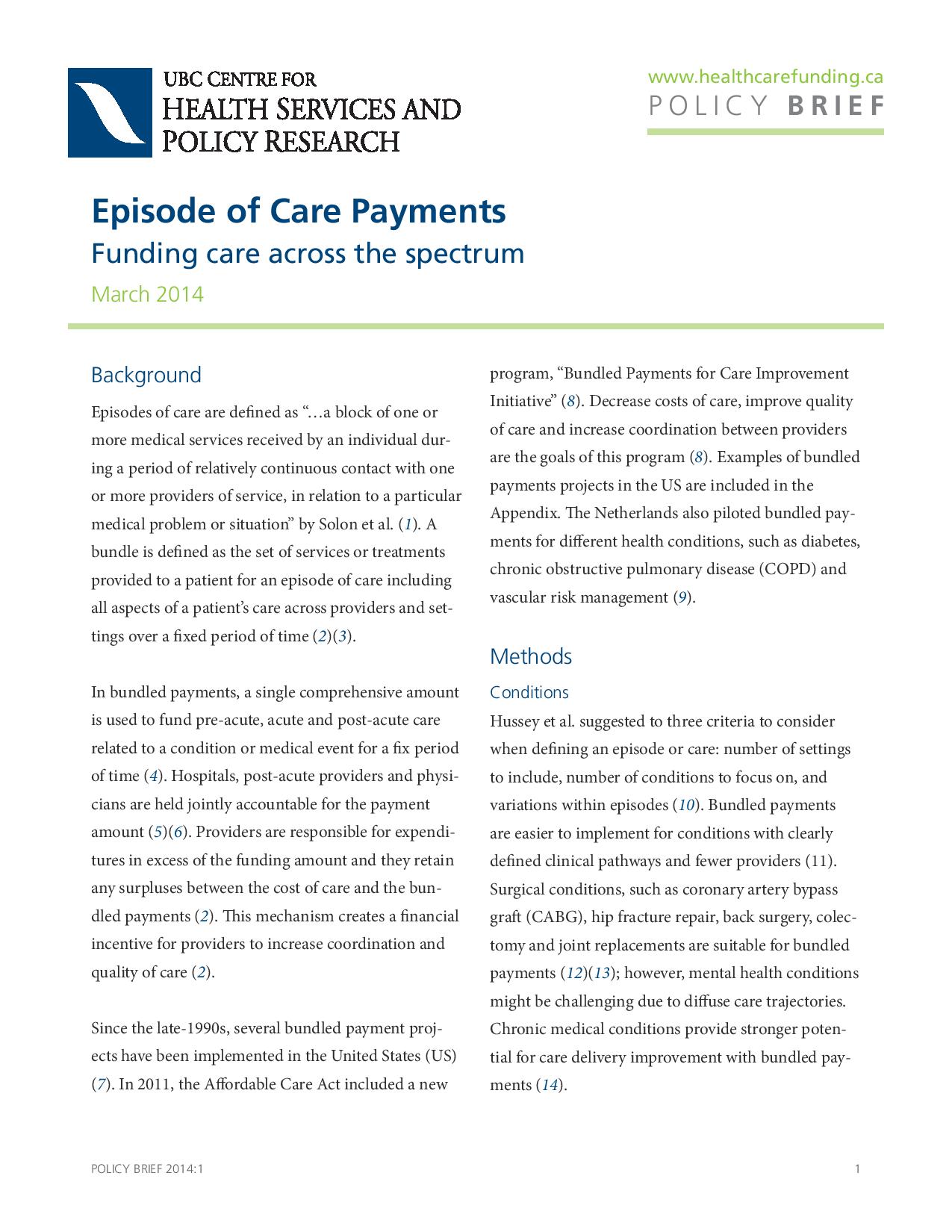Bundled payments are a recently-developed, alternative method for funding healthcare services. Bundled payments are a funding method in which a single funding amount is used to fund the total amount of care related to a condition or medical event for a fixed time period. A bundle of care encompasses all aspects of a patient’s care across multiple providers and settings, over a fixed period of time, including pre-acute, acute, and post-acute care spanning healthcare settings and providers.
A ‘bundle’ is defined as the set of treatments or services provided to a patient over a pre-defined timespan, or ‘episode’. For example, if a patient has a joint replacement, the bundle of care could be all care provided during an episode, from entering the hospital to 90 days after discharge. If the cost to providers of treating a patient is more than the set funding amount for the bundle, providers must cover the difference; if the cost of treating a patient is less than the set amount, providers keep the surplus. This arrangement gives providers the incentive to deliver efficient, effective, and high-quality care to avoid costly readmissions and re-hospitalizations.
The goal of bundled payments are to increase the coordination of care across the continuum of providers and settings, reducing fragmented and siloed care, which lowers the quality of care delivered to patients (Spehar et al., 2005). The organizational structure created by bundled payments links providers in a way where each one is held accountable by their peers for the cost and quality of care they provide to patients during an episode.
Bundled payments are not a funding method that is currently suitable for all conditions. Bundled payments are best suited for conditions or procedures which have clear clinical pathways. Bundled payments are less suitable for complex cases that have a variety of possible clinical pathways and costs as well as procedures with low volumes, or few providers of care (Struijs & Baan, 2011). As with many funding policies, accurate, timely, and linkable data must be available across all healthcare settings to properly establish a proper bundled payment amount.
Bundled payments are a step away from a more typical fee-for-service funding mechanism for each healthcare setting. Bundled payments promote a more integrated model of healthcare funding, and are a promising strategy to improve coordination between providers and settings of care by aligning financial incentives, resulting in improved quality of care and access to services (Spehar et al., 2005; Mor, Intrator, Feng, & Grabowski, 2010). This funding mechanism is being piloted in the US, the Netherlands, Sweden, United Kingdom, and Canada. The Netherlands uses a nation-wide bundled payment program that covers diabetes care, chronic obstructive pulmonary disease (COPD) care, and vascular risk management (de Bakker et al., 2012). Sweden’s Orthochoice covers total hip and knee replacement. The National Health Services in the UK is using bundled payments for cystic fibrosis and maternal care. The Integrated Comprehensive Care Project in Ontario, Canada is currently piloting an initiative for hip and knee replacement, thoracic surgery, COPD, and congestive heart failure. Examples of bundled payment models in the US include:
- Medicare Acute Care Episode (ACE) demonstration which includes orthopaedic and cardiovascular procedures (Chen et al., 2017)
- ProvenCare model under the Geisinger Health System which includes coronary artery bypass graft (CABG), hip replacement, cataract surgery, angioplasty, perinatal care, and bariatrics (Geisinger Health System, 2013)
- PROMETHEUS payment model covering conditions such as diabetes, hypertension, asthma, and surgical procedures such as hip and knee replacements (Hussey, Ridgely, & Rosenthal, 2011)
- Bundled Payments for Care Improvement (BPCI) Initiative which includes 48 different conditions
- Comprehensive Care for Joint Replacement (CJR) Model which includes hip and knee replacements
- Oncology Care Model which covers chemotherapy administration

